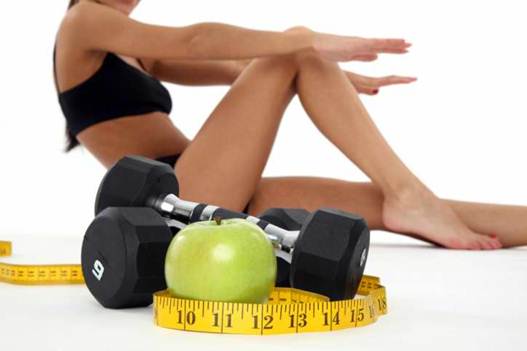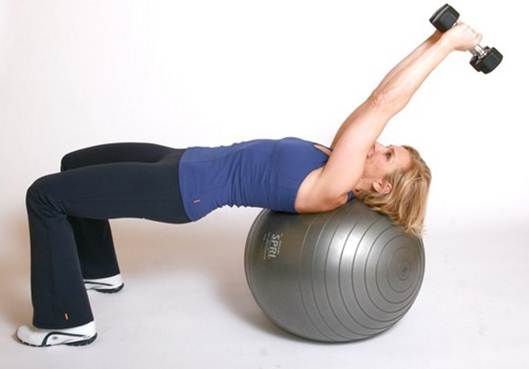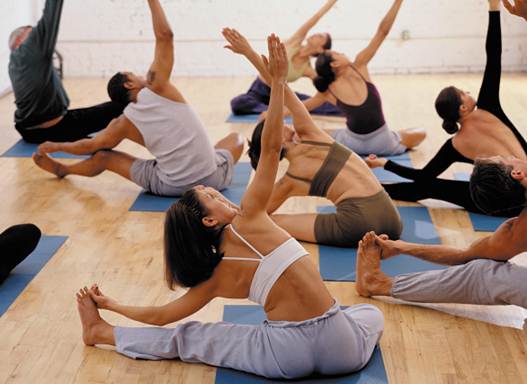If you want to be all-round fitness
star, you need more than just endurance or strength on your side. Here’s how to
power up your performance to reach your true peak
If you’ve ever tackled a really tough
fitness challenge such as training for a triathlon or running your first
marathon, you’ll know what it takes to dedicate yourself to an intense
challenge.
Fitness can mean different things to
everyone, but if you exercise for the thrill of striving to reach your maximum
potential you’re probably always on a bit of a self-improvement mission,
whether it’s a quest to cycle from London to Paris, smash your half-marathon PB
or push the heaviest weights in the gym.

Are
You Totally Fit?
You might be focused on building strength
or endurance, but to really hit your peak, there are five key factors you need
to concentrate on: cardiovascular fitness, muscular strength, muscular en
durance, flexibility and your body composition. Work on these areas and you’ll
be onto a winning formula.
1. Boost your cardio fitness
Cardio fitness – the ability of your heart
and lungs to deliver oxygen to your working muscles during exercise can be
improved through specific aerobic training. Variety is the spice of like, so
vary your cardio workouts from time to time. As with any exercise, your body
adapts to cardio stress so after a while, the same kind of workout will start
to have less effect. Alternate phases of running, rowing, cycling and
cross-training and try interval workouts to really ramp up your cardio power.
As little as 20 minutes of high-intensity sprint training three to five times a
week will do absolute wonders for fitness in a short time.
2. Build your muscular strength
Muscular strength refers to the amount of
force a muscle group can produce against resistance in a single effort. It’s
important to develop this for many reasons, including decreased risk of
osteoporosis and injury during sport, and increased muscle mass. Here at WF,
we’re always banging on about the importance of muscle mass! We tend to lose
muscle as we age so the earlier you start doing strength training, the better.
Think about everyday movements that tend to get more difficult with age, such
as getting out of a chair, walking up the stairs and lifting boxes – these are
all made easier with muscular strength.
Mix up your training with compound
movements, core exercises, barbells, dumbbells and resistance bands and keep
your reps low (one to five reps), using the highest weight you can manage while
maintaining perfect form. Remember: the more muscle mass you build, the higher
your resting metabolic rate, which translates to more fat your body will be
able to burn at rest.

Mix
up your training with compound movements, core exercises, barbells, dumbbells
and resistance bands and keep your reps low
3. Hone your muscular endurance
Want to be stronger and go for longer?
Muscular endurance – the ability to use your muscles repeatedly over a longer
time frame is affected by slow-twitch muscle fibres, which use oxygen to
generate more energy for continuous muscle contractions. This particularly
important for swimming, football and yoga, but it’s key for everyone as it
allows you to go about day-to-day activities with better from (Think good
posture and less back pain and injuries) and less fatigue. You can work on this
area by decreasing the weights you’re lifting while increasing the number of
reps you perform. Aim for three sets of 15 to 20 reps and shorten the rest
between sets. Yoga classes where poses are held are also a great way to increase
muscular endurance.
‘Pay attention to these areas and you’ll be
onto a winning formula’
4. Fine-tune your flexibility
Flexibility, or how much a certain muscle
will lengthen, is probably the most undervalued aspect of fitness even though
it can affect your health and sporting performance in lost of ways. Most people
stretch after a workout, but mainly to lower their chances of developing aches
and pains. Focus on increasing your flexibility instead and you’ll see some
huge body benefits, such as decreased risk of injury, a boost in your
athleticism and better coordination and posture.
So how do you supercharge your suppleness?
Warming up with a gentle jog and some dynamic stretches, such as arm circles
and leg swings, will help to prepare your body for exercise. Cool down
post-workout with a set of stretches held for 30 seconds each to held you dodge
injury and lengthen muscle fibres. And if you’re serious about making a real
change to your flexibility, try adding a yoga class to your usual training
programme, too.

And
if you’re serious about making a real change to your flexibility, try adding a
yoga class to your usual training programme
5. Know your body composition
Throw out the scales! The amount of lean
muscle and fat you have is a far more important indicator of health and fitness
than your weight.
Using tools such as callipers and body
composition monitors helps to assess the percentage of body weight that’s
attributed to fat. This is a valuable statistic, since too much body fat leads
to an increased risk of type 2 diabetes, heart disease, joint problems and
respiratory issues. Watching the numbers on the scales can be deceptive:
different shapes and health. Lean body mass such as muscles and bones are more
dense that fat, so someone who’s in great shape may actually weigh more than
someone’s who unfit or overweight. Smart training and a balanced, tailored
nutrition plan will help your body burn its fat stores and increase your lean
body mass.
How to be a real all-rounder
Ready to get started? Here’s our top tips
for pudding your peak fitness plan into action
Building a base of muscular endurance
before you try strength training will ensure your muscles are prepared for the
heavy lifting you expect from them, so you’ll have better form, less chance of
injury and superior results.
Don’t just stick to cardio exercise in fear
of bulking up form weight training. Women don’t have enough testosterone to
build muscle like men, so lift away!
Make sure you drink plenty of water,
whatever exercise you’re doing. Hydration is key to any kind of training
whether it’s cardio or strength, and it also helps to keep your bodily
functions in check.